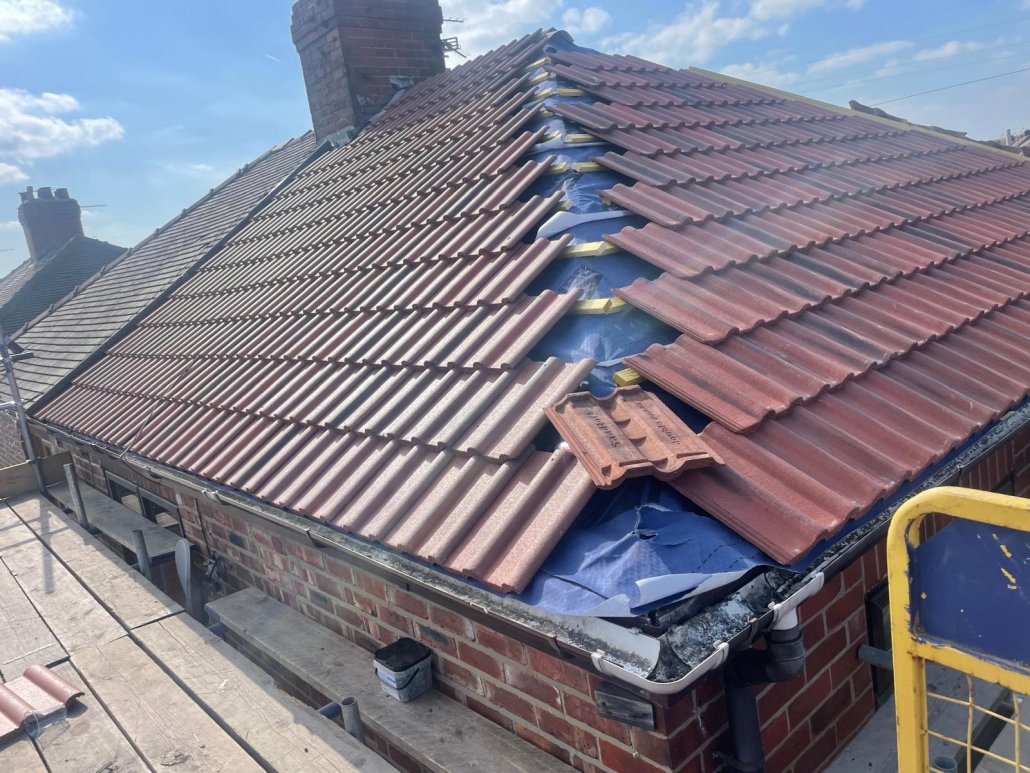For a long time, felt roofs have been the most reliable choice for property owners due to their cost-effectiveness, durability, and effortless installation. Even the most trustworthy materials have a shelf life. When minor roofing issues are overlooked, even small problems can develop into severe structural damage. Any unexpected energy spikes or a leaking ceiling may indicate a problem. Identifying the warning signs sooner can help save you from expensive roof repairs and severe disruptions. So, how would you know when your felt roof has undergone serious damage?
Signs Your Felt Roof Needs Repair or Replacement
Blistering, cracks, and ponding water are not just cosmetic issues. They are early indicators that your felt roof is no longer adequately protecting your property. Identifying the early warning signs can help you avoid expensive roof repairs or a full roof overhaul in the future.
Persistent Leaks After Rain
When water starts to leak through the ceiling or drip down the interior walls, it’s a sure sign of an issue. Occasional leaks are often manageable; however, consistent dripping, especially during or after rainfall, indicates damage to the roofing layers. Water infiltrating through the felt roofs may eventually lead to mildew, mould, and rot, which impact both indoor air quality and structural integrity.
Blistering or Bubbling on the Surface
Blisters or bubbles often form whenever moisture or water gets trapped under the surface layer. Over time, these elevated areas weaken the materials, allowing water to infiltrate through them. This is a common issue faced by flat roofs made of felt materials, particularly in areas with high humidity and heat. Neglecting the blisters causes cracks and holes that worsen over time.
Visible Cracks or Splits
The formation of cracks on the surface of the felt roofing is an unsightly sign, as they become possible entry points for water. Such openings might develop due to UV exposure, ageing materials, or freezing temperatures. After the felt material starts cracking, it loses its waterproofing feature, allowing water to infiltrate through its layers. On-time intervention by the felt roofing contractors can prevent extensive damage.
Pooling Water That Won’t Drain
Flat roofs sometimes struggle with water drainage; however, if water sits for more than 48 hours after rainfall, it may be due to a drainage issue or a sagging roof surface. The extensive ponding of water imposes greater stress on the roofing materials, leading to rapid degradation. The local roofers evaluate the roof’s slope and advise on whether repairs or replacement can offer a lasting solution.

Moss, Algae, or Fungal Growth
Any unwanted growth of algae or moss may initially appear harmless. However, it may be due to moisture retention on the roof’s surface. Felt roofing often suffers from this issue, which allows water to hold on longer than intended, leading to material breakdown or rot. The ultimate solution for property owners is to clean and coat their roofs, which can refresh the surface and add an extra layer of protection.
Sagging or Uneven Surface
A sagging roof indicates water damage under the felt layers. The issue arises from trapped moisture, failing support structures, or saturated insulation. Commercial property owners seeking flat roof maintenance should schedule regular inspections, especially when sagging signs appear. Urgent attention can help prevent the formation of bigger structural issues.
Age of the Roof Exceeding 15 Years
Felt roofs typically last 10 to 15 years, depending on the quality of installation and exposure to the elements. After reaching this timeframe, issues develop rapidly. If there are no visible issues, scheduling a roof evaluation with an experienced felt roofing contractor helps determine the system’s remaining lifespan. These proactive steps can help thousands in the future.
Increasing Energy Bills
Higher energy costs during the summer and winter may be linked to inadequate roof insulation. The damaging felt may adversely impact its properties, which makes heat escape during the winter and penetrate during summer. If you find that the energy efficiency has dropped significantly, the roof is likely a part of the issue. Replacing the damaged felt can help restore comfort and reduce monthly utility expenses.
Interior Paint Peeling or Wallpaper Staining
Water infiltration often starts slowly. Paint starts to create bubbles, peels, or cracks from within the walls, mainly in the corners or near the ceiling. The wallpaper might detach or discolour. Such changes are sure signs of water penetrating the felt and damaging the interior surfaces. Do not wait for the full leaks to appear, as the damage is already underway under the surface.
Repairs Are Becoming More Frequent
Whenever roof repairs are needed frequently, the cost-benefit ratio starts to change. A simple patch job may fix the issue; however, if similar issues start to arise, it’s time to reconsider a more comprehensive solution. Consulting with reliable local roofers ensures that you make informed decisions about whether to replace or repair your roof.
Conclusion
Minor issues may transition into major repairs without any warning. Watching out for signs, as we mentioned earlier, can help you prolong the lifespan of your roofing system and protect your investment. Trustworthy roofing contractors are your partners, offering professional assessments and timely solutions. Safeguardin the integrity of your flat roofs is extremely important. At High Grade Roofing, we bring years of experience and a better commitment to quality. From inspections to replacements, we deliver reliable solutions with expert service and long-lasting results. Contact us today to schedule a felt roof assessment or repair.
Frequently Asked Questions
Can Felt Roofs Be Overlaid Instead of Fully Replaced?
Yes, a new layer of felt can be added if the existing roof structure is stable. To determine suitability, a professional inspection is necessary. Contact us for details.
What Type of Maintenance Helps Prolong a Felt Roof’s Life?
Regular debris removal, surface inspections after storms, and checking drainage outlets can help preserve the condition. Promptly repairing minor damage also helps delay major roof failures.
Do Insurance Policies Typically Cover Felt Roof Damage?
Many insurance policies cover storm or accidental damage, but not wear and tear. Coverage depends on your policy terms. Review your documents or ask your insurance company for clarification.





